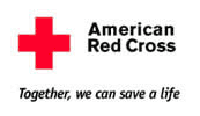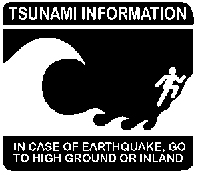|
|

|

Tsunamis are a Distinct Possibility for Both Coasts of the U.S.
by SixWise.com
|
The undersea
quake that hit the Indian Ocean on December 26, prompting the tsunami
that has wreaked havoc on southern Asia, is a poignant reminder of the
fragility of human life and our utter reliance on nature's cooperation
to survive.
The death
toll from this horrible tragedy has risen to over 120,000 people as of
this writing, making it one of the worst disasters in all of recorded
history.
In Indonesia
alone, where the worst damage occurred, more than 80,000 people have died.
Eleven other nations across southern Asia and East Africa, including Sri
Lanka, India and Thailand, have thousands missing and are gripped by fear
of more deaths that could be caused by disease from unsanitary conditions.
The
catastrophe has prompted what some are calling the biggest relief effort
the world has ever seen. Some 5 million people in surrounding areas
are lacking basic necessities like clean water, shelter, food and health
care, and world governments have said they would contribute $500 million
in aid to quake-tsunami disaster victims.
It
Could Happen in the U.S.A.
Tsunamis,
which are actually huge tidal waves caused by earthquakes beneath the
seafloor (typically they must occur at a magnitude greater than 6.5
on the Richter scale—the one that occurred in Asia was a 9), could happen
here in the United States.
|
|

Click to Make a Donation
To
say that all of us at SixWise.com are saddened by the loss of lives
and devastation of the December
26th tsunamis and earthquakes is an
extreme understatement. We have
joined with the other leading
websites across the Internet to
offer our subscribers the opportunity
to make donations directly to the
American Red Cross to aid the
dispersal of first aid and evacuation
of survivors. 100% of your donation
goes to the American Red Cross.
You will receive a confirmation of
your donation. Thank you for any
support you can provide in this time
of great need by our fellow
human beings.
|
In
fact, according to George Maul, a Florida Tech oceanographer, when asked
if a tsunami could hit the United States, he replied, "Absolutely. It
happened in the past and they will happen again in the future."
The
West Coast
The
West Coast is most at risk and experts say geological circumstances
similar to those in southern Asia exist near the Pacific Northwest Coast.
A rupture along the 680-mile fault known as the Cascadia subduction
zone, which is located uncomfortably close to the West Coast (just 50
miles offshore), could lead to a tsunami that could hit Northern California,
Washington, Oregon and British Columbia in 30 minutes or less.
Geologist
Brian Atwater of the U.S. Geological Survey put it quite simply. "People
need to know it could happen," he said.
In fact,
in 1700 a giant tsunami did hit the West Coast after an 8.0 or greater
earthquake hit the subjection zone. Sand deposits and other evidence
of severe flooding indicate that the huge wave hit Oregon, Washington
and British Columbia with devastating consequences.
As if
that's not unsettling enough, back in 2000 a scientist on one news report
said that they were expecting an earthquake along the fault line sometime
in the "near future."
|
Giant tsunamis have hit the
United States in the past and
researchers say they will hit again
in the future. The Pacific Coast is
most at risk, but the Atlantic
Coast, Caribbean, Hawaii and
Alaska are all at risk, as well.
|

| The
East Coast
There's debate as to whether fault lines like those on the West Coast
exist along the East Coast, which is why some say a tsunami is extremely
unlikely to hit the Atlantic Coast. Others, like George Maul, who has been
writing to the government to encourage some sort of tsunami warning system
for the East Coast (none currently exists), are not so sure.
According
to Maul, "The tsunami risk in the Pacific is significantly higher, but
about one-fourth of the earth's tsunamis occur in the Atlantic Ocean.
Most people aren't aware of that."
Computer
models do show that the East Coast could be hit by a giant tsunami if
a large volcanic eruption and landslide occurred in the Canary Islands,
but some researchers say that is only likely to occur once every 10,000
years. Others believe the threat is real and should be taken more seriously,
especially considering that no warning system is in place.
|
Sue Bilek,
an earthquake and tsunami expert at New Mexico Tech, said "On the East
Coast, there's no subduction zones like that [on the West Coast], but
you could get a tsunami there from a giant landslide into the ocean."
The
Gulf Coast, Hawaii and Alaska
"There's
another [subduction] zone like that near the Caribbean," Bilek said,
and there's no telling when underwater movements could occur. While
the Pacific Ocean has an elaborate monitoring system (did you know there's
a Pacific Tsunami Warning Center?) to alert scientists when tsunamis
and other shifts in water level have occurred, the Atlantic Ocean and
the Indian Ocean have no such monitors (the Caribbean Sea has one but
it only protects U.S. regions in that area including Puerto Rico and
the U.S. Virgin Islands).
Tsunami
warning centers have also been set up in Alaska and Hawaii. Hawaii's
biggest threat is from a tsunami that would come across the Pacific,
said Gerard Fryer, a geophysicist at the University of Hawaii, but a
tsunami could also occur from an earthquake beneath the local Mauna
Loa or Kilauea volcanoes.
Is
Prevention Possible?
It
isn't possible to stop a tsunami from occurring, but if warning systems
such as those in the Pacific Ocean are in place, and provided the tsunami
originates far off coast, residents could be warned hours ahead of impact
and given plenty of time to evacuate. However, if no warning system
exists, or if the tsunami originates close to shore, there may be no
warning at all.
|
If
you are in a tsunami-prone region, paying attention to any early
warning signs could mean the difference between life and death.
These are subtle but include:
- The
sea suddenly "opening up," leaving lots of fish and marine life
behind (the water will then rush back in a few minutes later)
- Signs
put up instructing people how to get to higher ground in the event
of an earthquake (Puerto Rico uses these, for instance)
- Bullhorns,
alarms or other sirens sounding on beaches—this means you should
immediately get off the beach (this is one reason why Hawaii has
bullhorns on beaches)
- Always
take warnings seriously and act quickly, don't delay or try to "watch
the storm"
|

|

Tsunamis can hit with no warning
at all. When visiting coastal
regions, pay attention to signs
like these that instruct you what
to do in case of an emergency.
|
|
And in
the event you find yourself on the ground near a coast when an earthquake
hits:
- Get
to higher ground immediately, even if you don't think you're in danger
(tsunamis can appear within minutes)
- Travel
on foot, not by car or bus
- If
higher ground isn't around, move inland as far, and as quickly, as
possible
- Once
inland, don't go back to the coast (waves that are even larger than
the first can occur later)
- Wait
for an "all clear" signal by radio, TV or other communication device
|
To get more information about this and other highly important topics, sign up for your free subscription to our weekly SixWise.com "Be Safe, Live Long & Prosper" e-newsletter.
With every issue of the free SixWise.com newsletter, you’ll get access to the insights, products, services, and more that can truly improve your well-being, peace of mind, and therefore your life!
|
|
|
|